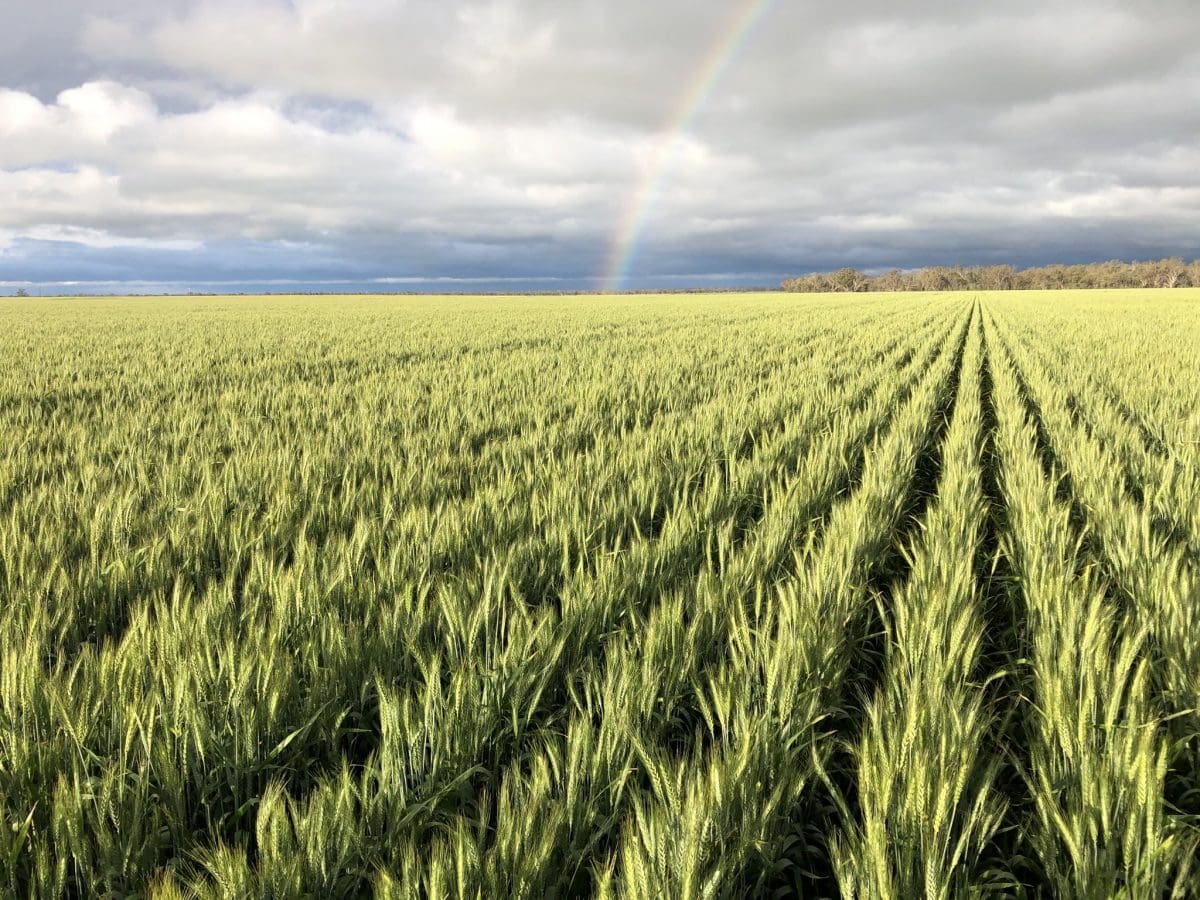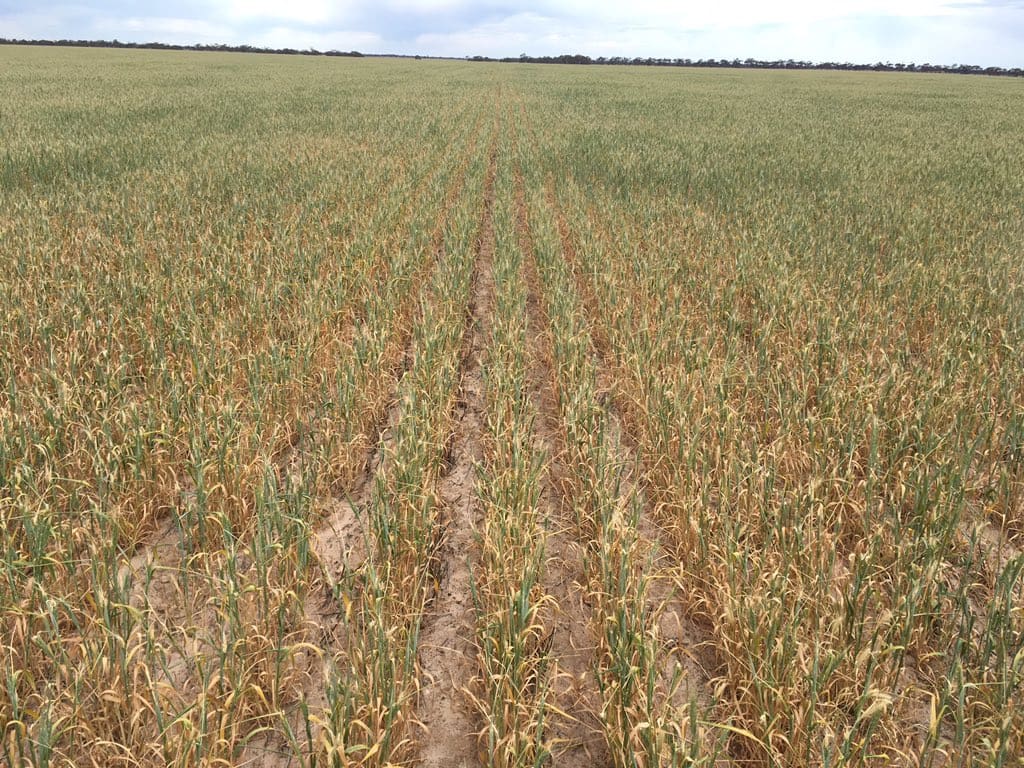
This wheat crop in central NSW is on track for harvest in November. Photo: Dave Newbigging, Peak Hill
THE climate outlook continues to suggest a wetter-than-average spring, but the month of September has been
quite a mixed bag in terms of crop-making rainfall for Australian grain growers.
Broadly speaking, New South Wales and Victoria have made grain in September, South Australia has
consolidated production estimates, Queensland has gone backwards, and so too has Western Australia.
In the most recent Bureau of Meteorology (BOM) climate outlook released last Thursday, the El Niño–Southern
Oscillation (ENSO) remains at La Niña ALERT which means there is roughly a 70-per-cent chance of La Niña
developing in 2020. Most weather models are also expecting the Indian Ocean Dipole (IOD) to move into
negative territory in October.
WA needs rain
The spring outlook is still wet, particularly for the eastern two-thirds of the country which BOM predicts will receive
above-average rainfall. This is great for the winter-crop outlook in the eastern states, but it is not so good for
Western Australian growers, as year-to-date precipitation is already well below average in all districts.
Western Australia entered the spring on a knife-edge, with late crops and a poor soil-moisture profile. Good falls
early in September eased the growing pains for a few weeks. However, save for a few coastal showers, it has
been extremely dry in the second half of September, and crops are again struggling for moisture. Substantial
rainfall is required in all regions to arrest the deteriorating crop outlook.
Production forecasts have suffered accordingly. A WA wheat crop above 8 million tonnes (Mt) now appears
highly unlikely; such has been the yield decline. Barley production is currently around 3.2Mt but if rain is not
received, it could easily start with a two by the time harvest is completed. Canola production is also suffering as
the subsoil moisture across the entire growing season has been insufficient to encourage a deep taproot.

This wheat crop at Salmon Gums in WA has had only 4mm of rain since early August. Photo: Digby Graham
Rosy in NSW, Victoria
On the flip side, NSW has had a cracking season thus far. Almost the entire cropping area has received average to above-average rainfall since the beginning of the southern wet season on April Fools’ Day. Falls in the second half of September pushed registrations for the month past the 25 millimetre mark in
all districts, except in the north-west along the Queensland border, and the south-west along the Victorian border.
Mind you, the rainfall was needed to maintain the state’s huge production potential. And more will be required in
October to finish crops, especially in the central and southern regions.
If rains are forthcoming, a NSW wheat crop in excess of 11.5Mt is possible following an increase in the planted area this season after back-to-back droughts.
The barley area is in the same boat, particularly in the north-west, and state production is approaching 3Mt. The
state’s canola crops are big, robust and have had excellent flowering conditions. The difference compared to the
past couple of years is remarkable, and this season’s production is expected to rebound to more than 1.3Mt,
Normalized Difference Vegetation Index (NDVI) is a measure of crop health derived from satellite imagery. The
index quantifies vegetation by measuring the difference between near-infrared, which vegetation strongly reflects,
and red light, which vegetation absorbs. The imagery suggests the area planted in NSW is bigger than in 2016-17, and the NDVI values are higher than or almost equal to the 2016-17 season in many parts of the state.
In Victoria, the winter crops have been ticking along quite well for most of the season, and September rainfall
was sufficient to boost production estimates in all regions except the northern Mallee. NDVI readings are above
average across all of the state’s winter crop area. The excellent crop health and favourable early spring weather conditions mean Victorian production
forecasts have increased slightly in September and currently stand at around 4.1Mt, 2.1Mt and 700,000t for
wheat, barley and canola respectively.
South Australia patchy
The picture is far more complex in South Australia, where the NDVI data suggests the crop has been going
backwards since it peaked in early July. The entire season has been very much hand to mouth in most districts,
and some isolated areas had insufficient rainfall to complete planting in the autumn. Precipitation in
September has been extremely disappointing in all districts, except the southern tip of the Eyre Peninsula and the
South-East.
Parts of the Eyre Peninsula and the Mid-North of the state are having one of the driest seasons this century.
Consequently, root-zone moisture is below average, and the crops are struggling. State production forecasts for
wheat and barley have now dipped below 4Mt and 2Mt respectively, and could easily go lower if the state
doesn’t receive some good general rains in the next two weeks. Expected canola production is now below
400,000t.
Queensland a ‘basket case’
Lastly, the Sunshine State, most of which has been a basket case all season. Southern Queensland has just
endured its fourth consecutive winter of below-average rainfall each preceded by an extremely dry summer. The
tap turned off at the end of October 2016, and farming has been a struggle ever since.
The year’s story in Central Queensland is no better. The early potential has been sapped by a lack of in-crop
rainfall in most areas. As a result, it is now possible that this year’s total winter-cereal production in Queensland will
come in below 1Mt for wheat and barley collectively. While it is double that of last year, it is still a disappointing
result.
Lower dollar helps
Meanwhile, it was risk-off across global markets last week as investors worried about a faltering world economic
recovery, rising coronavirus infections, uncertainty about US stimulus, and the upcoming elections. This
sentiment is music to the ears of the Australian farmer with the ‘Aussie’ smashed, closing the week US$0.03
lower.
Notwithstanding falls in international cash and futures values across the week, the lower Australian dollar, and
production issues in the key export jurisdictions saw grower bids and the local futures bourse sharply higher for
both wheat and barley by the close of business last Friday.
Australia is already competitive into Asia from a wheat perspective, and into Saudi Arabia from a barley perspective.
New-crop domestic basis has done all the work needed to be export competitive, and the 2020 harvest has barely
commenced. With substantial new-crop export surpluses expected in both wheat and barley in almost all port
zones, domestic grower bids will primarily be a function of the exchange rate and values relative to competing
export origins.



HAVE YOUR SAY